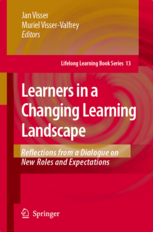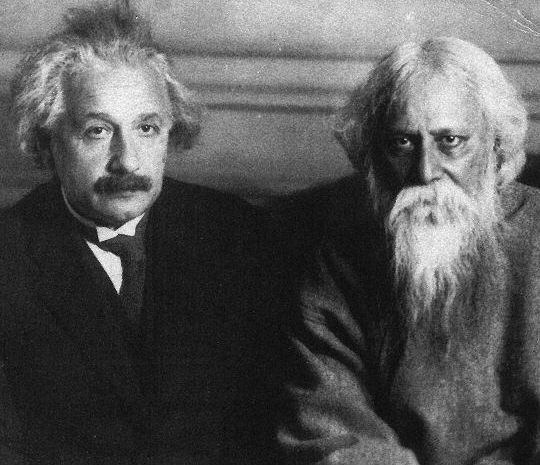Learners in a Changing Learning Landscape
 Sunday, August 24, 2008 at 10:05AM
Sunday, August 24, 2008 at 10:05AM 
Reference: Learners in a Changing Learning Landscape Reflections from a Dialogue on New Roles and Expectations Series: Lifelong Learning Book Series , Vol. 12 Visser, Jan; Visser-Valfrey, Muriel (Eds.) Springer,
2008, XII, 304 p., Hardcover
There are numerous books about learning and many different points of view about how people learn and what kinds of institutions (if any) work best for students and the public at large. The nuances of learning and the subtle and often challenging issues that surround the learning experience have remained (after hundreds of years of effort) at the centre of policy development for most western governments. Obviously, there are many important questions and concerns that make the debates about how we learn crucial to understand and to consider, not the least of which is that so much public money is invested in learning institutions. Notwithstanding the extent of and devotion to learning, the gap between our understanding of how people learn and why has only widened in recent years. This is perhaps the result of demands upon the educational system to both supply human resources for the benefit of our economic health and to teach with enough breadth to create a good citizenry. The balance that is needed among economic exigencies, creative freedom and critical thought cannot be achieved through simplistic and often linear notions of pedagogy and outcome. It is in this context of intense debate that a new book, entitled, Learners in a Changing Learning Landscape edited by Jan Visser and Muriel Visser-Valfrey is so welcome.
For those of you who are not familiar with Jan Visser and his extraordinary contribution over many years to learners and learning, take a look at the web site of an international organization that he founded and of which he is the President, Learning Development Institute.
The book is divided into fourteen fascinating chapters. The Vissers have brought together writers from many disciplines and the range of articles is very impressive. There is as much emphasis on the philosophy of teaching as there is on the experience of being an on-line learner. There is a superb chapter on the role of games in learning and some profound reflections on some of the basic principles of instruction. However, I will limit this review to the crucial second chapter by Jan Visser because it is such a fine and important piece of research while also being an important call to action for teachers and policy-makers in the educational area.
Visser begins the chapter with what seems like a simple question, what is learning? (12) He uses his own life as a way of reflecting on the informal manner in which we learn. So much of who we become and so much of what we do is the product of processes over which we have very little control. [Over the years,] “I learnt numerous other things, such as overcoming shyness, accepting tragic and irreversible loss, and interacting gently with most of those I meet. None of these were ever taught to me in any formal way or setting. I had to find out for myself, interacting with those whose advice I chose to accept and whose model I sought to emulate.” (13)
Learning is about comprehension and comprehensiveness and in the final analysis without a holistic view and practice, the learning experience loses its intense connection to collaboration and context. Classrooms, lecture halls and conversation are about collaboration, which in its simplest sense means that any exchange depends on the parties involved feeling that they are on a level playing field. And learning does not take place in one place or at one time, but is a continual feature of how humans engage with the world. So, Visser comes up with the following definition of learning: “…the disposition of human beings, and of the social entities to which they pertain, to engage in continuous dialogue with the human, social, biological and physical environment, so as to generate intelligent behavior to interact constructively with change.” (15) Perhaps the most important feature of this definition is the emphasis on change and on the notion of continuous change. Visser connects this to an even higher value centred on complexity that is, on the ability to engage with increasingly complex problems and challenges as one of the foundations of learning. Complexity is opposed to linearity and ambiguity is of greater value than certainty.
This emphasis on complexity continues throughout Visser’s chapter with a distillation of some of Edgar Morin’s ideas on education.
Visser has pulled together something very important here. This entire book becomes an example of what he suggests in his opening chapter. It is not only that learning is complex, but also that in order to understand learning more is needed than the kind of simple progression — linear in its design — that we have put together through the traditional educational system. The challenge is to take all of the elements that make it possible to live a rich and inquisitive life and place them into a context where they can be appreciated. In order to change that context, a new philosophical base has to be built, one that appreciates the transformative relationship between learning and change. A must read.
Table of contents
1. Let the dialogue begin: An introduction.-
2. Constructive interaction with change: Implications for learners and the environment in which they learn.-
3. The learning sciences, technology and designs for educational systems: Some thoughts about change.-
4. Learners in a changing learning landscape: Reflections from an instructional design perspective.-
5. The influence of epistemological beliefs on learners’ perceptions of online learning: Perspectives on three levels.-
6. Getting to know the feral learner.-
7. Postsecondary education in the changing learning and living landscapes.-
8. Online learning in context.-
9. New online learning technologies: New online learner competencies. Really?-
10. Reflections on seeking the ‘invisible’ online learner.-
11. Will games and emerging technologies influence the learning landscape?-
12. What makes good online instruction good? New opportunities and old barriers.-
13. Why basic principles of instruction must be present in the learning landscape, whatever form it takes, for learning to be effective, efficient and engaging.-
14. We question, we reflect, and we question again, therefore we are…: An analysis of the evolving dialogue around the central themes in this book.-




